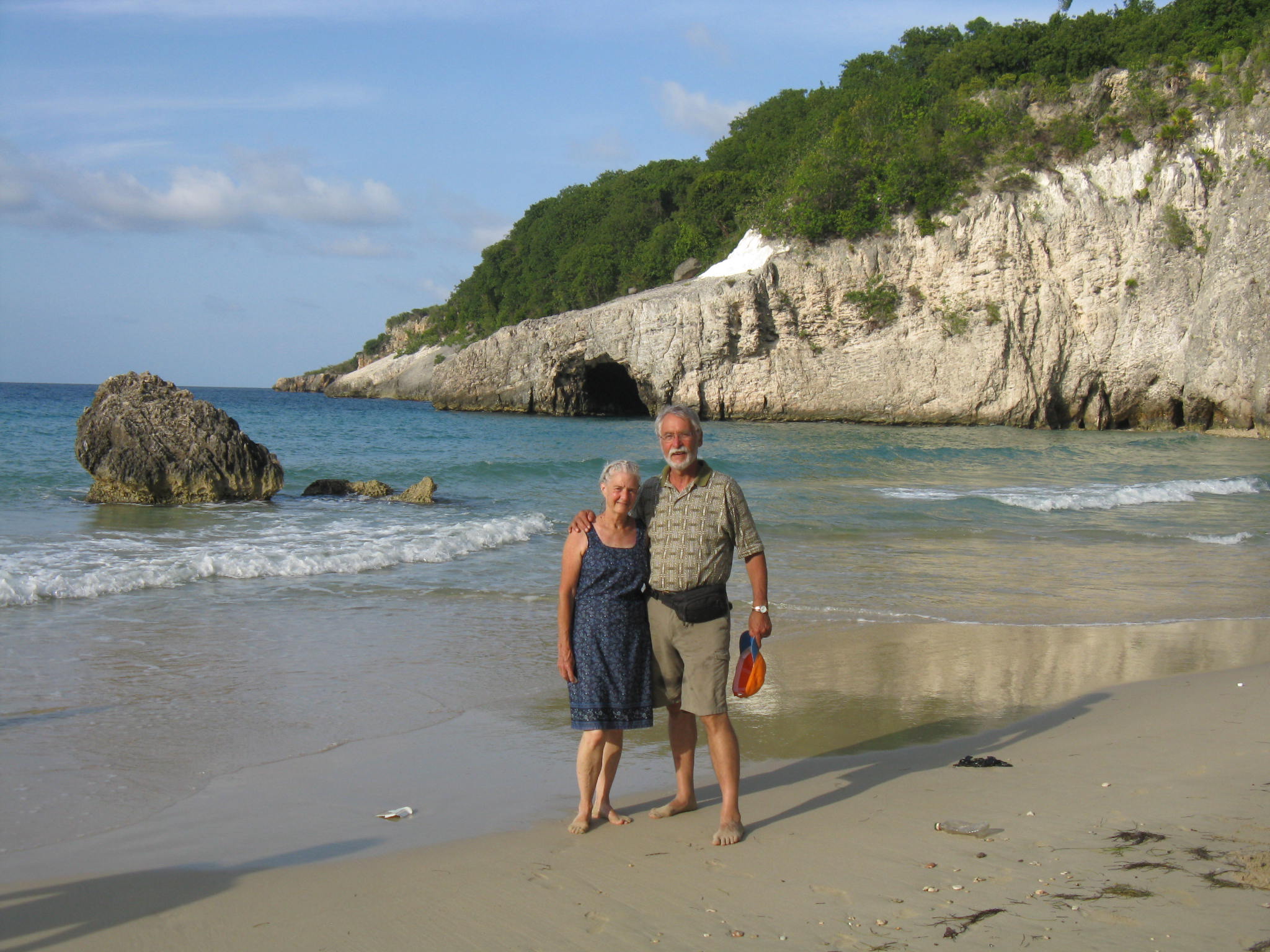About Haiti

"For sheer unspoiled physical beauty, no place can beat Haiti—from white cliffs that rival Dover's to untouched islets, from the fertile Artibonite Valley to cresting emerald mountains like brawny-shouldered Herculean brothers one after another, and from long white beaches to blue pools set improbably in a crackling-dry forest. To say nothing of its handy location: The Pearl of the Antilles, as travel agents called Haiti in its tourist heyday back in the 1940s, is just a dropkick off the coast of Florida." (Conde Nast Traveler)
Located approximately 680 miles southeast of Miami, the island of Hispaniola, which is shared by Haiti and the Dominican Republic, is one of the windward islands of the Caribbean. The climate is tropical with average temperatures throughout the year in the 80's Fahrenheit.
At first reading, it sounds like a little bit of heaven. But which of us have not also heard the current realities of Haiti?

A little smaller than the state of Maryland and a little larger than Vermont, Haiti is a small country with a large population that is growing rapidly. It is also the poorest country in the western hemisphere with an average annual income of $480 ($1.30 US/day). At the beginning of the century there were approximately 7.5 million inhabitants or 700 people per square mile, making Haiti second only to Barbados as the most densely populated country in the Americas. This figure is roughly double what it was in 1950 and it continues to grow at about 2 percent per year.
The vast majority of the residents are of African descent and descendants of slaves brought to the island by Europeans who had colonized the island following it's "discovery" by Christopher Columbus. The original inhabitants were Taino indians who were almost completely exterminated by ill-treatment and by diseases brought by the Spaniards who colonized the island.
The Spaniards, and later the French began a massive importation of slaves from Africa, and for a time, Haiti became the richest nation in the western hemisphere. However these slaves were savagely mistreated and as a result in 1791 they rose up in a violent revolution against the terrible conditions in which they lived. On January 1, 1804 they celebrated the overthrow of the colonizers, becoming the first successful black slave revolution in the world. Much has happened since then (see links below) leading to the current situation of extreme poverty and economic difficulties.
Like many of the Caribbean nations, Haiti is frequently visited by hurricanes. In 2008, four major hurricanes that roared through the Caribbean crossed over Haiti. Due to the deforestation that has taken place in Haiti, what would be a major problem in other nations, in Haiti is usually a major disaster.
"When four huge storms struck this summer (2008), one after another in the space of 30 days, Haiti never stood a chance. Each time the sky darkened and drops began to fall, it took just hours for torrential downpours to soften hillsides into sludge and send mounds of slick, wet earth crashing into homes. Survivors scrambled onto roofs and watched helplessly as others perished in one of the Caribbean's worst disasters of recent years. The four tropical storms, ending with September's Hurricane Ike, turned Haiti into a wasteland.
Nearly 800 people died, about 60 percent of the country's harvest was destroyed and entire cities were rendered desolate and uninhabitable. Life in the western hemisphere's poorest country went from grim to desperate." (The Guardian Nov 8, 2008)
 In 2010, Haiti was devastated by a 7.0 magnitude earthquake which killed somewhere between 160,000 and 300,000 people. Many homes, schools, churches and businesses were destroyed with at least 1.3 million people displaced. Government offices and records were destroyed.
In 2010, Haiti was devastated by a 7.0 magnitude earthquake which killed somewhere between 160,000 and 300,000 people. Many homes, schools, churches and businesses were destroyed with at least 1.3 million people displaced. Government offices and records were destroyed.
The resulting poor hygiene conditions and other earthquake related problems led to a Cholera epidemic. The official figure for deaths resulting from this epidemic is 9,200 although a much higher figure is likely.
Despite all this, the people of Haiti are resilient. They continue to struggle to rebuild, replant (as they are able) regroup, and survive, going on as best they can. Of course, like all of us they do get discouraged. They truly appreciate hearing of your interest, your concern, your support and your prayers.
 They are generally quite friendly, and always greet one another in passing with a smile and "Bon jou, Ki jan ou ye?"... "Good,day, How are you?" They enjoy music, singing and dancing. They love to gather in groups and become "part of the action."
They are generally quite friendly, and always greet one another in passing with a smile and "Bon jou, Ki jan ou ye?"... "Good,day, How are you?" They enjoy music, singing and dancing. They love to gather in groups and become "part of the action."
Haiti is a country where the majority of people cannot read or write. As a result of this, a rich oral culture has grown up. Most news is conveyed by radio and word of mouth. Evenings will often find Haitians gathered in groups sharing news, riddles, jokes and stories. Until the last few years, formal education was usually conducted in French. Although French is required in all schools today, most early primary education is done in Creole, the national language.
We have written only a small amount about the strength of the Haitian people and the difficulties they have faced through history and they continue to face today. We hope you will go to these links to find more information.
Some Good Links Providing Interesting & Helpful Information About Haiti
http://www.everyculture.com/Ge-It/Haiti.html
http://topics.nytimes.com/topics/news/international/countriesandterritories/haiti/index.html